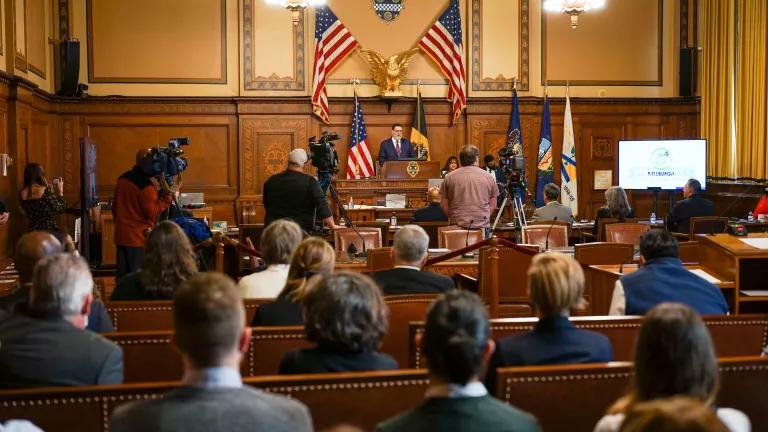Waiting for the Next Infrastructure Failure Is Keeping Our Mayors Up At Night

Writers, architects, planners and poets may celebrate the nation’s large, wondrous bridges and walkable city centers. But mayors know that much of the success of what we call infrastructure is literally keeping the trains running on time, managing drinking water, combating water pollution, and repairing potholes and sidewalks—the stuff we take for granted until it breaks.
These systems are failing in varying degrees all over the country, and that’s worrying city leaders nationwide.
NRDC’s Urban Solutions program is seeking to provide some answers and relief in the first of a series of reports—called Taking the High Road to More and Better Infrastructure in the United States—that we’re releasing today to help mayors tackle our most pressing 21st century infrastructure problems.

Mayors have named the No. 1 challenge they share with other government partners as continued underinvestment in infrastructure—as well as naming infrastructure at the top of their own challenge list, according to the Menino Survey of Mayors.
A Politico poll earlier this year showed a large number of American mayors are concerned that disinvestment will kill people in their cities, and a recent story on Wired.com documented the increasingly common practice of un-paving roads because governments have no cash even to fix potholes.
Mayors say that if they suddenly received a huge capital grant to devote to a specific project, they would invest in mass transit (22 percent), roads (20 percent), and water, wastewater and storm water infrastructure (18 percent).
It’s interesting that mayors seem to know exactly what they would do if only they had the money. Public coffers, most agree, seem unable to meet the demand.
But what if there were innovative sources of financing and new ways to look at infrastructure beyond its reputation as a municipal financial drain accomplishing what amounts to routine maintenance?
We believe, in fact, infrastructure—when done taking what we call the “high road”—can be a source of financial growth, jobs, and increased social and environmental health and well-being.
Over the past year, the Natural Resources Defense Council, with funding from the Ford Foundation, has led a cross-disciplinary research team to explore the challenges of generating private sector investment in High Road Infrastructure. We’ve taken our ideas to the White House as part of the Build America Investment Initiative and we’ve studied how several cities are engaging with high road principles.
High Road Infrastructure is differentiated from traditional infrastructure in that it takes into account where projects are built, how they are built, what they accomplish and how they are integrated into their surroundings. High Road construction should perform multiple functions, have long-term benefits, have broad positive impact, take environmental consequences into account, use innovative and green financing and meet specific standards that include accountability, among other principles.
We know from studies like those I’ve mentioned that mayors, other leaders and citizens are worried about lead in water, contaminated rivers and streams from antiquated storm water systems, crumbling roads and sidewalks, stressed transit systems and a myriad of other problems with the built environment.
These worries have entered the national conversation and served as a vehicle for discussion on the economic and social issues that underlie our responsibilities to the environment and the public good.
What we are growing to understand is that a poorly maintained built environment says something about us and what we prioritize as a nation. And time and time again, the working poor and low-income Americans have disproportionately shouldered the burden of our nation’s crumbling infrastructure.
We believe America can do better. Our new series of reports shows how we can start in cities small and large, nationwide.
For more information, see our issue paper Taking the High Road to More and Better Infrastructure in the United States.




